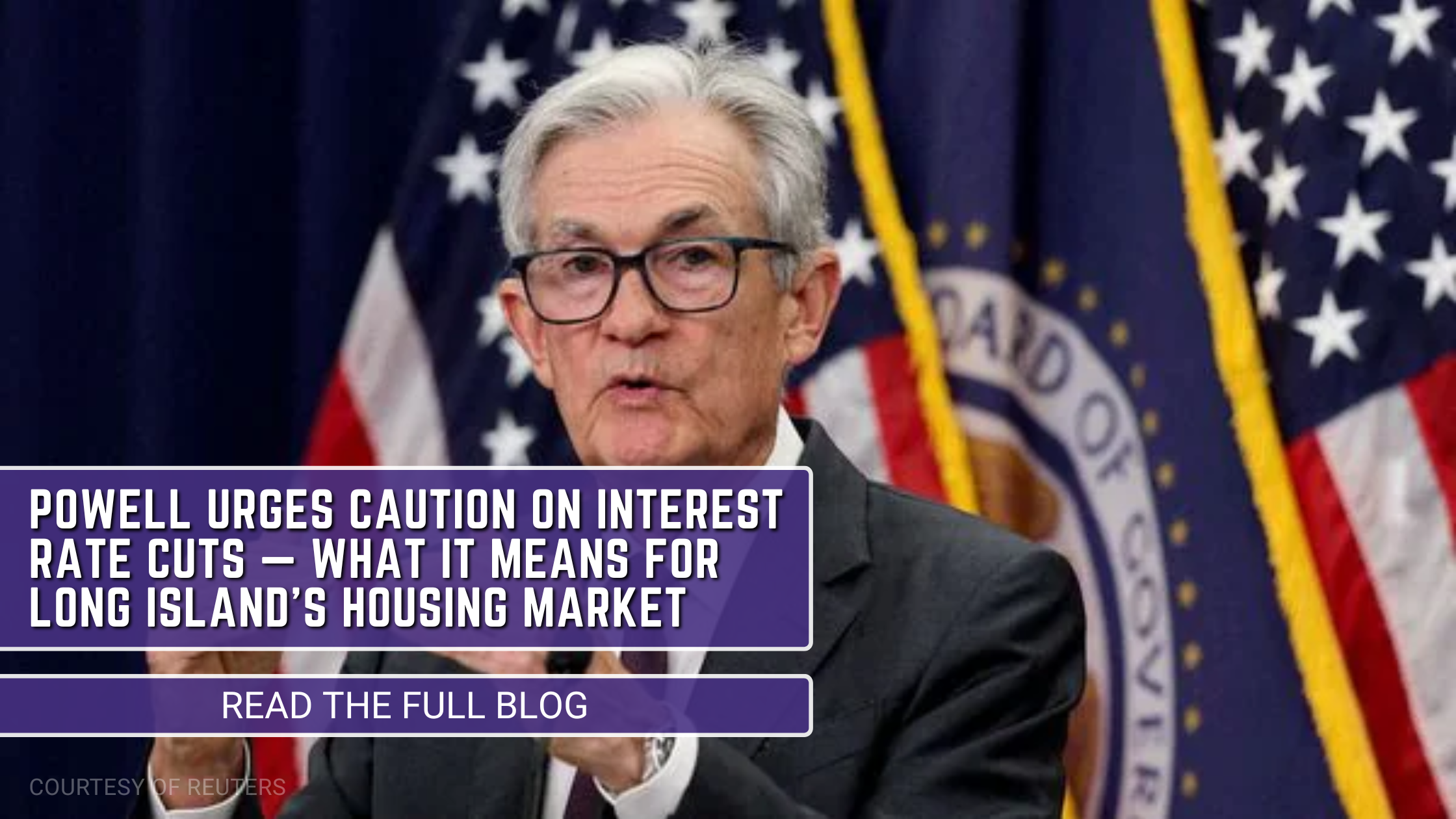Powell Urges Caution on Interest Rate Cuts — What It Means for Long Island’s Housing Market

Federal Reserve Chair Jerome Powell signaled Tuesday that the Fed will move cautiously on future interest rate cuts — a message that could ripple through Long Island’s housing market in the months ahead.
Last week, the Fed cut its benchmark interest rate for the first time this year, bringing it down to about 4.1%. While that move eases borrowing costs slightly, Powell warned against cutting rates “too aggressively,” citing the risk of reigniting inflation.
A Divided Fed on the Path Forward
Not everyone agrees with Powell’s cautious stance. Trump-appointed Fed officials, including Stephen Miran and Michelle Bowman, are pushing for faster, deeper cuts. They argue that the job market is weakening and that the Fed risks falling behind if it doesn’t act quickly.
On the other hand, Powell — joined by Chicago Fed President Austan Goolsbee — is urging patience. With inflation still running above the Fed’s 2% target, Powell says it’s better to move slowly rather than risk reversing course later.
This divide within the Fed means the path of interest rates this fall is still very much uncertain.
Why Long Island Homebuyers and Sellers Should Care
Mortgage rates don’t move in lockstep with Fed policy, but the Fed’s decisions set the tone for borrowing costs across the economy. Here’s what that means locally:
-
For Buyers: Even a modest cut can help bring down mortgage rates, improving affordability for those struggling with high home prices. But don’t expect rates to plummet overnight.
-
For Sellers: Softer rates could bring more buyers back into the market, potentially supporting home values. But uncertainty about the Fed’s next moves might keep some buyers on the sidelines.
-
For Refinancers: If the Fed cuts rates further later this year, it could open the door to better refinancing opportunities — though Powell’s cautious tone suggests this won’t be immediate.
The Local Outlook
On Long Island, where home prices remain elevated and inventory is tight, even small shifts in mortgage rates can make a big difference in buyer demand. A quarter-point drop could expand the pool of qualified buyers, while a slower pace of cuts might keep affordability stretched.
For now, Powell’s message is clear: the Fed is walking a fine line between fighting inflation and protecting jobs. Until that balance tips more decisively, Long Island homeowners and buyers should prepare for gradual, not dramatic, changes in borrowing costs.
FAQs
Will the Fed’s rate cut lower mortgage rates on Long Island?
Mortgage rates may drift lower, but changes are usually gradual. Local lenders also factor in inflation expectations, investor demand, and broader market conditions.
Why does inflation matter for interest rates?
If inflation stays high, the Fed is less likely to cut rates aggressively. That keeps borrowing costs, including mortgages, higher.
How do Fed decisions impact Long Island’s housing market specifically?
High home prices on Long Island mean affordability is tightly linked to mortgage rates. Even small shifts in borrowing costs can affect how many buyers qualify for homes.
Should I wait to buy until rates drop more?
Timing the market is tricky. While rates may ease further, low inventory on Long Island keeps competition strong. Waiting could mean missing out on the right home.
What’s next for the Fed?
Policymakers have signaled the potential for two more cuts this year, but divisions within the Fed mean the pace and timing are still uncertain.
